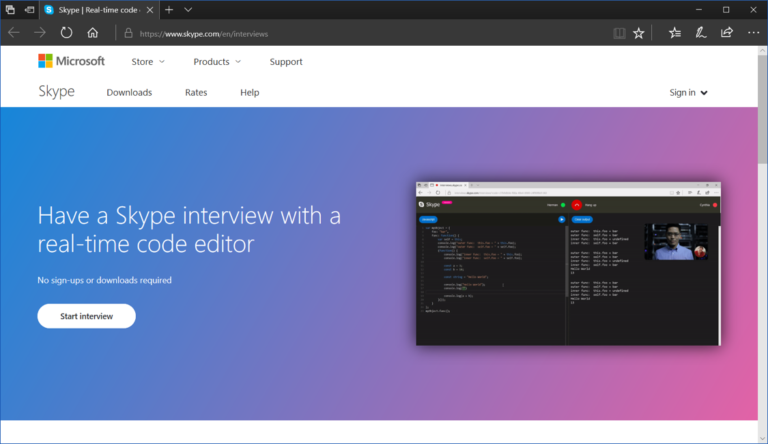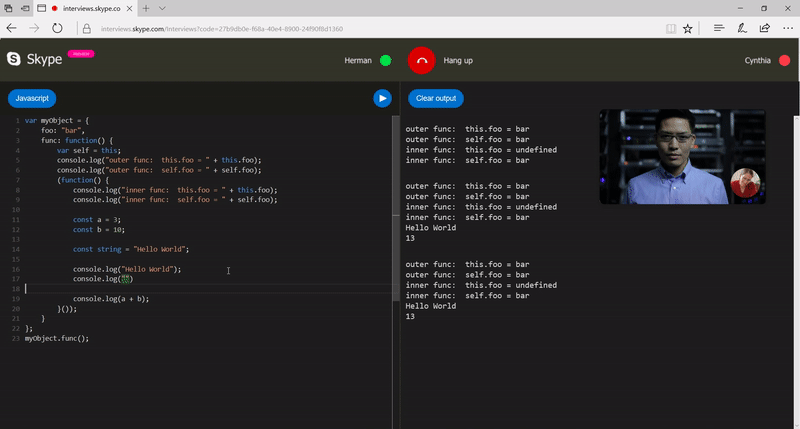Skype chat has implemented a code editor for interviews

Conducting technical interviews via Skype will be easier thanks to a new feature that has been implemented in the web version of Skype messenger. This is a code editor that works in parallel with video chat. The built-in editor supports seven popular programming languages: C, C ++, C #, Java, JavaScript, Python, and Ruby; there is a built-in syntax highlighting to prevent syntax errors during an interview.
You can view the new feature in the web version of the browser at Skype.com/interviews . It works in Microsoft Edge and Chrome browsers (version 32 or higher) and only in browsers with English localization.
Going to this address and clicking the "Start interview" button, you will receive a unique link that should be passed on to the other party in order to share the common code editor window. From this window, if desired, video chat is launched, so that the window with the image of the interlocutor is placed on top of the editor and does not particularly interfere.

Directly during the interview, you can change the programming language by clicking on the button in the upper left corner.
As you can see, the developers of instant messengers are very rare, but still they add really useful functions to the programs, and not just new emoji and “stories in photos” sets. This reproach can also be attributed to Microsoft, which, on June 1, 2017, introduced a new generation of Skype to many more convenient “buns” for the home user, who uses Skype for cute soulful conversations with relatives and friends.
Of course, there are many other ways to conduct technical interviews over the Internet. For example, HackerRank , Codility, Interview Zen, CoderPad, Remoteinterview.io, HireVue's CodeVue (CodeEval) and others. The function is very popular, so there are options. But the popularity of Skype as a regular messenger and chat can contribute to the fact that they will use this program for interviews. This will generally speed up and simplify the interview process, because during the conversation you no longer need to run an extra tool.
All Articles